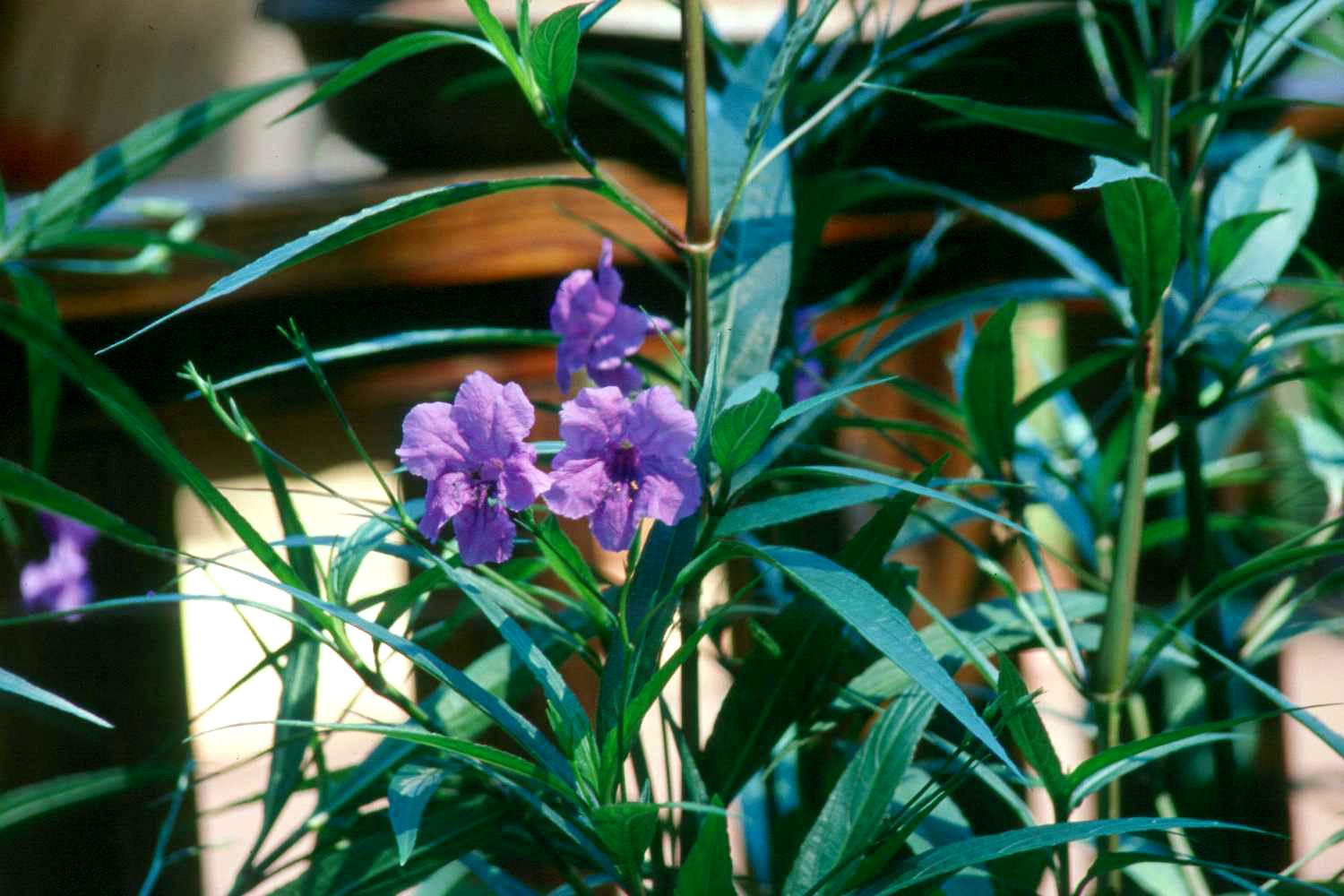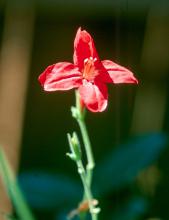Information Possibly Outdated
The information presented on this page was originally released on March 18, 2002. It may not be outdated, but please search our site for more current information. If you plan to quote or reference this information in a publication, please check with the Extension specialist or author before proceeding.
Mississippi gardeners can't lose with ruellia
By Norman Winter
MSU Horticulturist
Central Mississippi Research & Extension Center
Few plants are as tough or more deserving of a place in the Mississippi flower border than the ruellia. In our high heat, it not only endures but is also a star performer and one of those plants that gives everyone the green thumb.
Though called the Mexican petunia, ruellia is not related to petunias. Petunias are in the family solanaceae, making them related to tomatoes, peppers and eggplant, while the Ruellia brittoniana is in the acanthaceae family with members like the thunbergia, or black-eyed Susan vine.
Ruellia has bluish-purple flowers that radiate color from the plant, but this one is usually not sold by varietal name in our area. Pink-flowered varieties available like the Chi-Chi Pink reach 36 to 48 inches in height and have a spread of 18 inches. I am partial to the taller varieties that are well suited to the back of the perennial border. Katy's Dwarf is a shorter variety that only reaches 8 to 12 inches and spread 12 to 24 inches.
Ruellia grows best in full sun, but I have seen some remarkable plantings south of Jackson that received quite a bit of shade and still bloomed profusely. The Mexican petunia thrives in moist, well-drained, organic-rich soils but performs well in poorer soils, too. A word of warning: in the highly rich soils, it can spread if you don't pay close attention. If you hate plants that might become invasive, then choose Katy's Dwarf. Even though it might reseed, it poses no real problem.
The deep-green foliage with hints of burgundy is attractive and works well in combination plantings. The leaves are narrow, pointed and reach almost a foot in length on large varieties. The flowers are borne in clusters on forked branches. The flowers are tubular or funnel-shaped and may reach 2 inches in length. The long bloom period is usually between June and October.
I love them planted with lantanas like New Gold, Samson and Silver Mound. Other good combinations are ruellia and purple coneflowers, like Magnus, or my personal favorite, Bravado. Ruellia also works well with our old-fashioned summer phlox or garden phlox, Mississippi Medallion Award-winning Butterfly pentas and Port Gibson Pink verbenas.
Besides being an asset in the perennial border, ruellias definitely shine when planted as a mass or as accent plantings. Numerous references suggest they are both larval and nectar sources for butterflies, but I have not witnessed that for myself yet.
The ruellias that will be for sale at your nursery later this spring are definitely perennial in zone 8, and most all gardeners testify that they return in northern Mississippi in zone 7 with a good layer of mulch for winter protection.
They are also easy to propagate. You can divide clumps, take root cuttings and plant by seed. Stems are easy to root in moist soil or sand. Another big plus is that they are disease- and pest-free unless I coax a butterfly's offspring to munch on one.
Look also for a new one called Ruellia elegans. For lack of a marketing name, most people call it the elegant ruellia. This one was at first thought to be less hardy, but this simply is not the case. The flower color is the most unique in that it is bright red. It only gets around 12 inches tall and produces these five-petaled flowers on long stems. This one gets better with age; as the clump spreads and matures you get more flowers.




